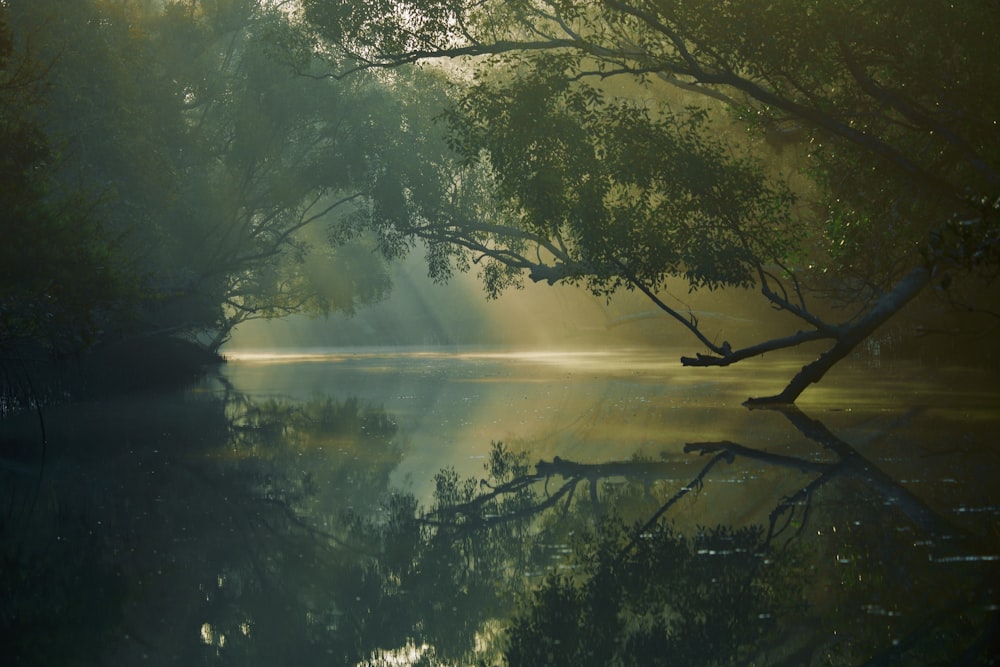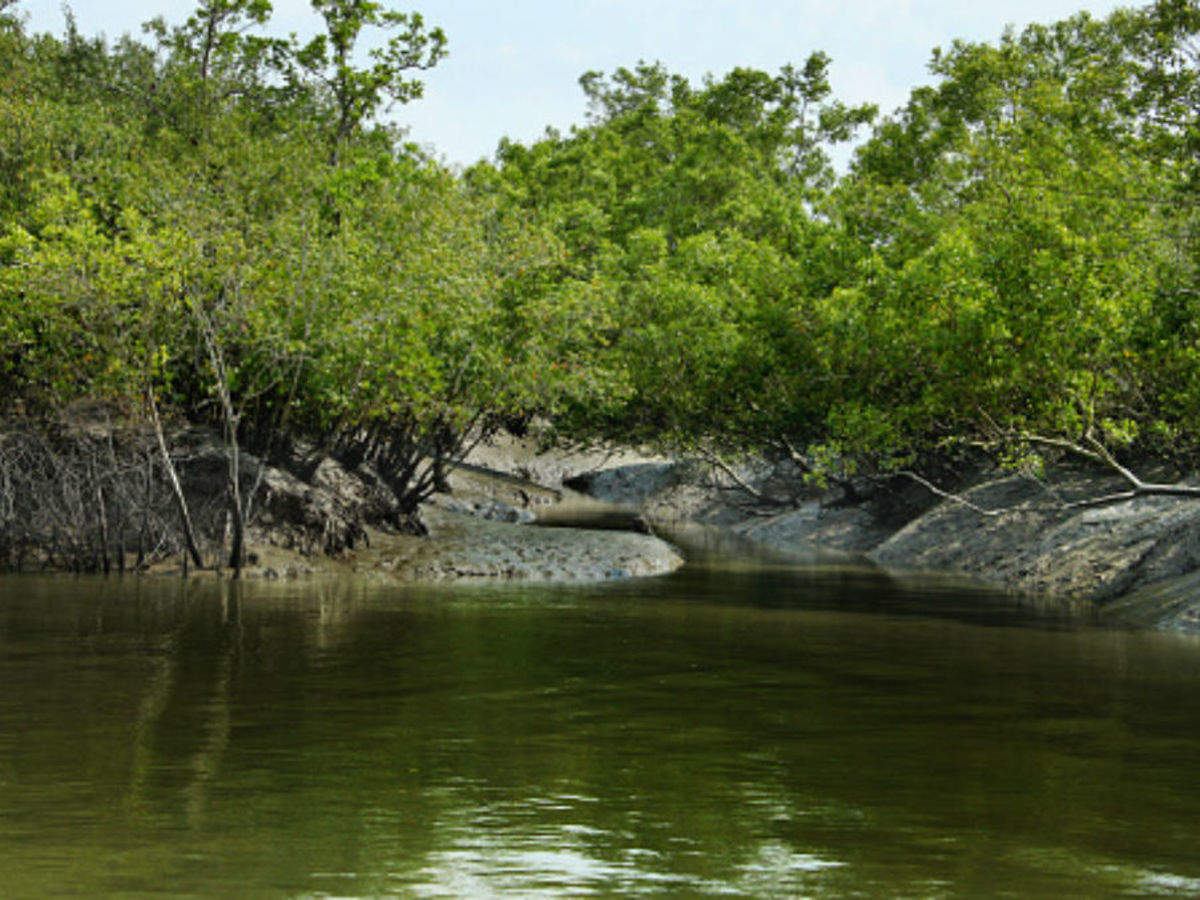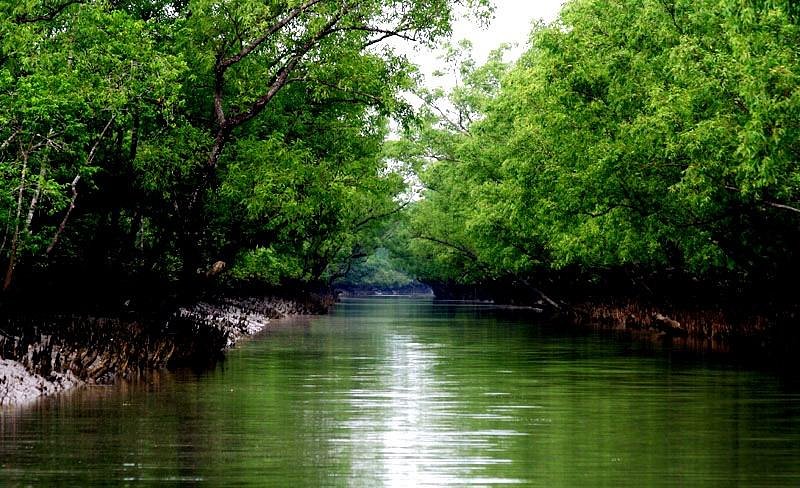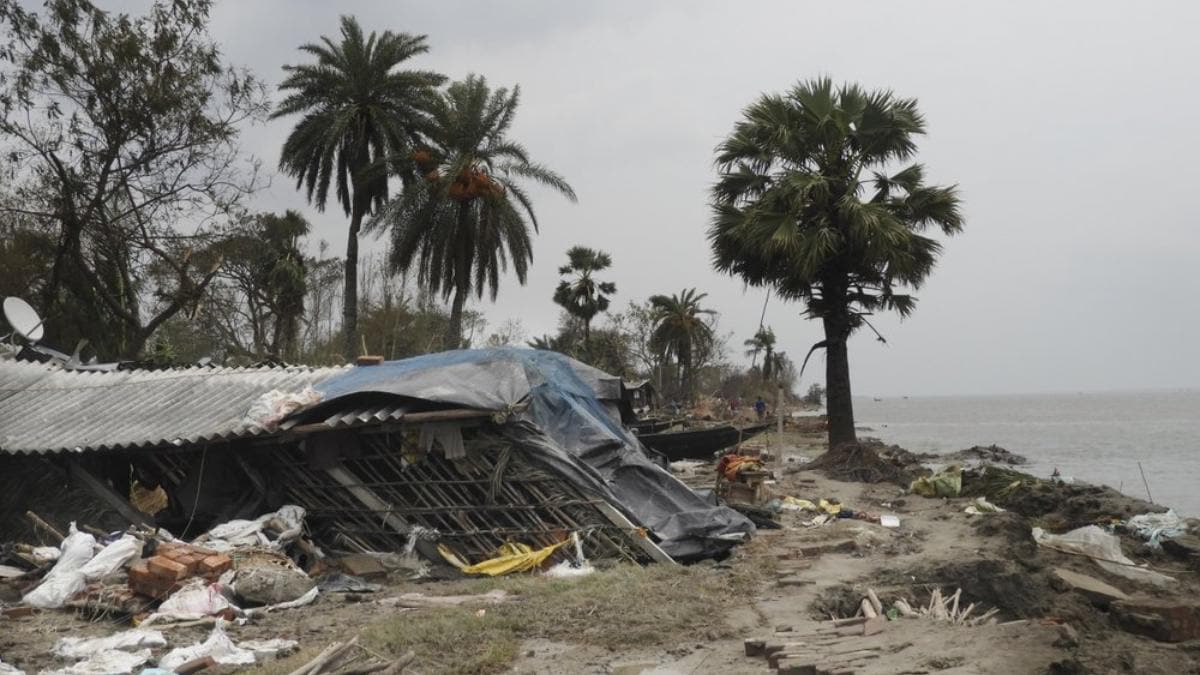The Sundarbans are comprised of a group of islands that are linked together by a network of rivers and canals. These islands form the world’s biggest mangrove forest and are home to a wide array of valuable natural resources. The Sundarbans are a one-of-a-kind environment and ecosystem that are recognised all over the world for their significance in terms of the number of species they contain and the resources they provide.
Natural beauty In Sundarban Westbengal.
The Sundarbans are home to a wide variety of vital plant and animal species, some of which are endangered not just in their native region but also on a global scale. The Sundarbans are an important part of the ecotourism industry for a number of reasons, including the presence of the Royal Bengal Tiger, estuarine crocodiles, a variety of dolphins and reptiles, and a number of birds and creatures that are on the verge of extinction.

Know More About Sundarban
In the year 1869, the Sundarbans received their very own dedicated forest management division for the first time. In accordance with the Forest Act of 1865, a sizeable portion of the mangrove woods was designated as limited forest land in the year 1875. (1865 Act VIII).
After the remaining sections of the woods were designated as reserve forests, the control of the forest, which had previously been exercised by the civil administration district, was handed over to the Forest Department the following year. In the year 1879, a forest division was established as the major administrative and management unit for forests. Its administrative centre was situated in the city of Khulna in the country of Bangladesh. The first management plan was developed between the years 1893 and 1898.
In 1911, the area known as So was not included in the census because it was regarded as a portion of unknown wilderness. At the time, it had a total length of 266 kilometres (165 miles), spanning all the way from the mouth of the Hugli River to the mouth of the Meghna River.
On the interior, it was bordered by the two populated districts of Khulna and Bakerganj, which were part of the 24 Parganas district. It was believed that the overall land area, including the ocean, amounted to 16,900 square kilometres (6,526 sq mi). The swampy forest was home to a number of exotic animals, including tigers, among other species.
All of the efforts to reclaim the land had been a complete and utter disaster. The Sundarbans are cut through by a network of rivers, streams, and river channels, many of which were important transportation routes for native people and steamboats travelling around the Bengal region. The country of Bangladesh contains a significant chunk of the delta.
Sundarban Geography
Between the longitudes of 88° 42′ and 89° 04′ E and the latitudes of 21° 432′ and 21° 55′ N is where you’ll find the Sundarban National Park. On average, the park is 7.5 metres above sea level. There are 54 little islands in the park, and numerous Ganges river tributaries pass through it.
Sundarban Eco-geography, rivers and watercourses
Within this estuary delta, a network of channels is created by the confluence of seven major rivers and a variety of minor watercourses. Every river eventually empties into the ocean from a southernly direction.
The two flow tides and two ebb tides that occur every 24 hours, with a tidal range of 3-5 m and up to 8 m in a typical spring tide, are entirely dependent on the tidal motion to cover the entire Sundarban at varying depths. The tidal range is between 3-5 metres and up to 8 metres during a typical spring tide.

The deposit of silts back into the channels, elevation of the bed, and construction of new islands and streams are all unexpected results of the geomorphology that has occurred as a result of the tidal action.
Within the Bay of Bengal, from a latitude of 21 degrees 00 minutes to 21 degrees 22 minutes, there is a significant natural depression known as the Swatch of No Ground. Within this depression, the water depth suddenly increases from 20 metres to 500 metres. This unexplained depression causes the silts to be pushed to the south or the east, so producing new islands.
Sunderban Tiger Reserve
Background
The Sunderban Tiger Reserve may be found in India’s West Bengal region, more specifically in the South 24 Parganas district. It has a total size of 2585 km2, of which there are populated areas covering about 1437.4 km2 and the remaining 1474 km2 is covered by forest. Both the Sunderban and the mangrove environments can be found in close proximity to one another in Bangladesh.
The Sunderban mangroves are a part of the largest mangrove system in India and provide a habitat for a population of tigers in a unique ecological context. These mangroves are also a UNESCO World Heritage Site. These woodlands are home to many different kinds of birds, as well as saltwater crocodiles, sea turtles, and turtles that live in estuaries. The reserve is inhabited by spotted deer, rhesus monkeys, fishing cats, wild hogs, and wild pigs, among other wild animals.
The Sunderban is isolated from the other parts of the mainland that are inhabited by tigers by a dense forest. Therefore, forest resources are experiencing a significant amount of biotic stress. Residents of the area are granted permission by the Indian Forest Service to collect a total of 3 metric tonnes of wax and 50 metric tonnes of honey per year.
The numerous, thin tidal streams that cut through the landscape give rise to a variety of island sizes, ranging from small to big. These islands are frequented by tigers, and consequently, encounters between humans and tigers are not uncommon.
Because of the one-of-a-kind environment and the erasure of evidence brought on by high and low tides, it was not possible to assess the tiger population in Sunderban using the more modern method.
The first phase of data collecting has been finished, and tiger estimating is presently in progress. Phase I data gathering utilised a combination of radio telemetry and the rate of pugmark deposition from known tigers.

Damage from Cyclone Aila
On May 25, 2009, Cyclone Aila made landfall in the Sunderban region, wreaking havoc on the field camps and villages in the surrounding area. Because of the considerable flooding that was brought on by breaches in the embankments that were located on the village side, a number of people have been left trapped in the region. There was soil erosion as well as damage to staff quarters, generators, and bamboo piling as a result of the field camps being submerged in water that was between 12 and 15 feet deep for nearly seven hours.
A tiger that was seen wandering around an abandoned cow barn in a village is said to have been captured and then released back into the wild after it was rehabilitated. Only the deaths of two spotted deer are known to have occurred; there have been no confirmed tiger fatalities documented. There have been a number of non-governmental organisations (NGOs) that have made contributions to the relief effort.
The State Forest Department has established a commission to look into the damage, which is estimated to be worth over Rs. 11150,000. The state has got Rs. 10 million in central funding via Project Tiger to help with the repair of damaged infrastructure.
Damage from Cyclone Amphan
According to a quick assessment report from June 2020 by the Indian Red Cross Society (IRCS), there were 2.9 million houses that were reported destroyed in the Indian state of West Bengal. It was necessary to have supplies available, including shelter kits, cooking equipment, tarps, and several lighting alternatives for people who had either entirely or partially lost their homes.
Damage was done to 5,142 sub-centres at the community level, 563 primary health centres, and 169 Block primary health centres in the state of West Bengal as a result of the storm. The COVID-19 outbreak had already placed an excessive demand on the available health systems, and the destruction caused by the hurricane made this condition even worse.
In areas that are inundated with water and have a high concentration of rubbish and other waste products, the risk of diseases transmitted by water and insects will be elevated.
On May 20, 2020, Cyclone Amphan made landfall close to Sagar Island, which is located in the South 24 Parganas region. It has been responsible for the destruction of critical infrastructure as well as the loss of lives.
The storm caused “almost the whole nylon fencing” in the forest to be demolished. This fencing minimises man-animal conflict by preventing tigers from invading communities that are located on the outskirts of the forest.
The cyclone reportedly caused damage to “dozens of forest camp offices, tents, watch towers, and staff apartments,” in addition to the barrier. However, post-storm patrolling uncovered no dead tigers and instead provided sightings of the animals roaming the forest. The West Bengal Forest Department had initially been concerned that the cyclone would damage or kill tigers.

Challenges
Future challenges for the Sunderban Tiger Reserve include a number of them. Because of wandering tigers, human-tiger conflict persists to be an issue. In the past forty years, it is believed that over a thousand villagers have been killed by tigers in the Sunderban, where tigers target humans. The reserve’s tiger population has not yet been estimated using the updated approach. The Chief Minister-led State Steering Committee’s charter, the establishment of the reserve-specific Tiger Conservation Foundation, and a tiger conservation plan are all awaiting approval.
Read More:
| Sundarbans: Exploring the Jungle by Boat |
| This is the World’s Largest Delta |
| Facts about crocodiles |
| Know About Sundarban |
| know about Mangrove |

Hotel Bookings In Sundarban
Tour with AC Non AC, AC Luxury cabin, tasteful Menu, truly professed Tour Guide, Private bus, which is fairly significant. 12 regular spots, folk dancing, a bus, a boat, room sanitization, and a package with AC and non- AC, which is fairly significant.
You can choose All the packages from here
Sundarban Tour 1 Night 2 Days.
Sundarban tour 2 Nights 3 Days.
If You want to buy an online Sundarbans Tour Package:
The Best Sundarban Tour Package from Kolkata is available for booking. Continually promote unforgettable Sundarban tourism! There are several activities included in The Sunderbans Tour Packages, many of which you may take advantage of. The list below includes a few of them.
Buy online Sundarban 1 Day tour
Buy online Sundarban Boat Tour 3 days 2 Night
Buy Online Sundarban 3 days 2 Night Package
Buy Online Sundarban 1 Night 2 days Package
simplest of your time to go to it, also why not? Visit Sundarban and feel happier.
We have Sundarban Tour Packages day moment.
For Booking Of Stylish Sundarban Package( Starting from 2799/-)
Name: Dilip MAity
Organization: Royal Sundarban Tourism
Organisations Web link: https://royalsundarbantourism.com/
Contact: +917439965413 / 8584838109
Gpay / Phone pay :
Email: info@royalsundarbantourism.com
Address: Tiger More, Gosaba, Pakhiralay, Pakhiralay Main road, District- 24 Parganas South, West Bengal 743370
Any Enquiry: https://www.argusdna.com/

